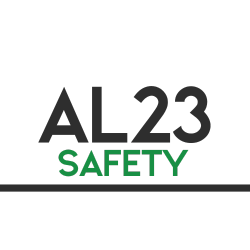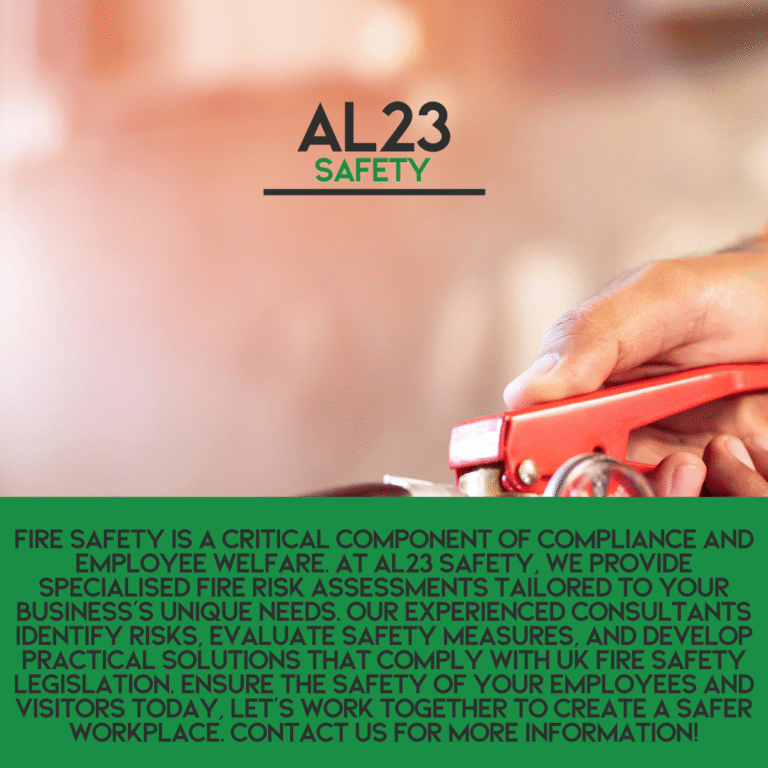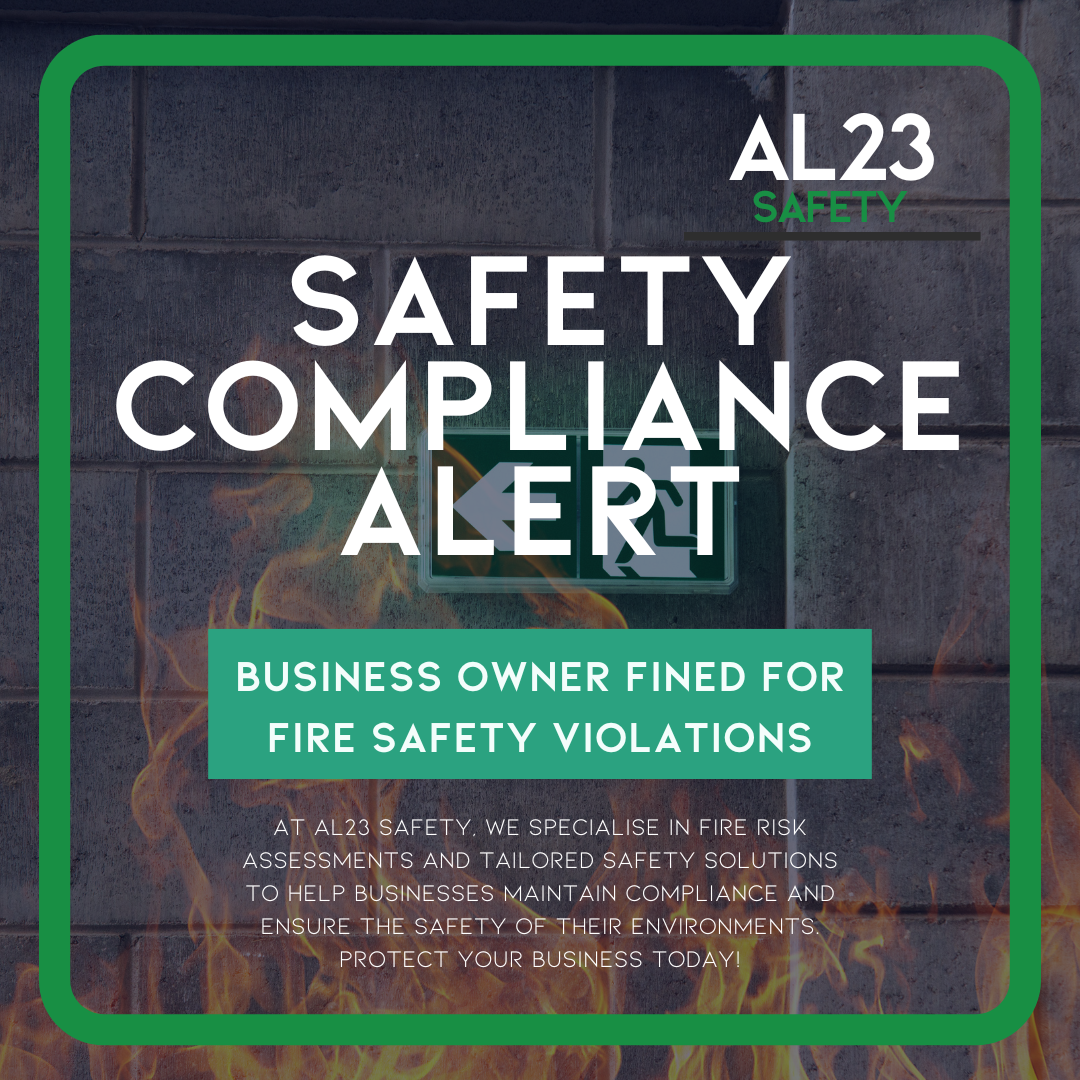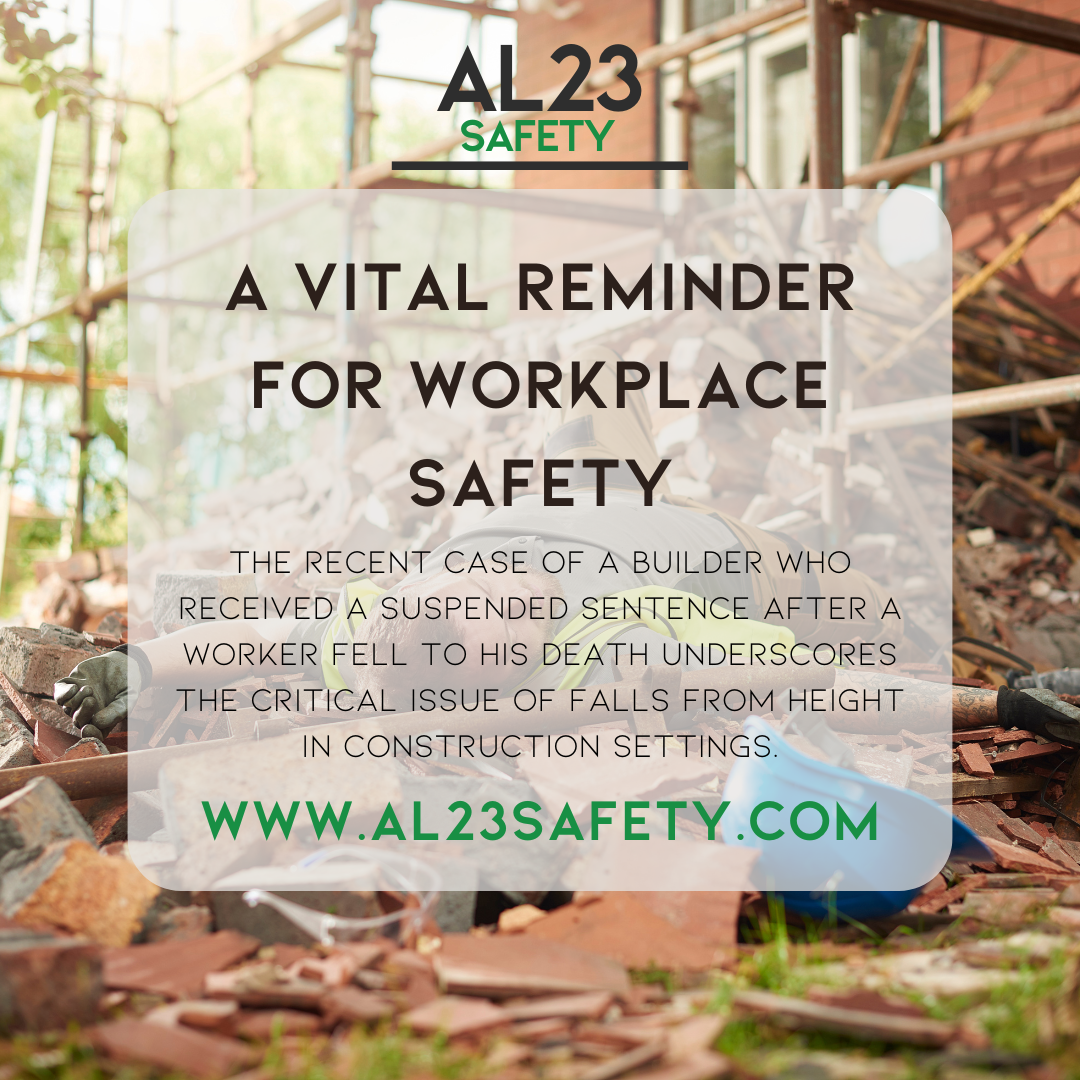Fire risk assessments are the cornerstone of workplace safety, ensuring businesses protect employees, visitors, and assets from the devastating impact of fires. Mandated by the Regulatory Reform (Fire Safety) Order 2005, these assessments are a legal requirement for most UK businesses, identifying fire hazards and implementing measures to mitigate risks. At AL23 Safety, we specialise in delivering tailored fire risk assessments and comprehensive fire strategies, fostering compliant and secure environments across industries. With the Health and Safety Executive (HSE) reporting over 5,000 workplace fire incidents annually, neglecting fire risk assessments can lead to severe penalties, injuries, and reputational damage.
The importance of fire risk assessments cannot be overstated particularly in high-risk sectors like manufacturing, where flammable materials heighten dangers. Our consultancy has helped clients reduce fire risks by up to 40% through bespoke assessments and training, as seen in a manufacturing firm that transformed its safety protocols after our intervention. In this blog post, we’ll outline five critical steps to ensure effective fire risk assessments, empowering your business to meet UK fire safety regulations and protect lives.
The Vital Role of Fire Risk Assessments in Workplace Safety
Fire risk assessments involve systematically identifying fire hazards, evaluating risks, and implementing controls to ensure safety. Required under the Fire Safety Order, they apply to non-domestic premises, including offices, factories, and retail spaces. Non-compliance risks significant fines, as evidenced by cases like St Lukes (Preston) Ltd, fined £77,000 for fire safety breaches in 2025. Beyond legal obligations, fire risk assessments safeguard lives and assets, reducing downtime and boosting employee confidence.
At AL23 Safety, we go beyond compliance, crafting fire strategies that integrate seamlessly with your operations. Our assessments address industry-specific risks, from electrical faults in offices to chemical storage in manufacturing, ensuring a proactive approach to workplace safety. By prioritising fire risk assessments, businesses can prevent tragedies and foster a culture of safety.
5 Critical Steps for Effective Fire Risk Assessments
Drawing from our expertise and the Fire Safety Order requirements, here are five essential steps to implement robust fire risk assessments and ensure workplace safety.
Step 1: Identify Fire Hazards with Precision
Effective FRA begin with identifying potential ignition sources (e.g., electrical equipment), fuel (e.g., paper or chemicals), and oxygen sources (e.g., ventilation systems). AL23 Safety conducts thorough inspections, pinpointing hazards specific to your workplace. For a retail client, our assessment uncovered overloaded circuits, leading to immediate corrections that prevented potential fires.
Step 2: Evaluate People at Risk
Assessing who is at risk employees, visitors, contractors, or vulnerable groups like disabled individuals, is crucial. Fire risk assessments must consider occupancy patterns and mobility needs. AL23 Safety tailors assessments to account for diverse groups, as seen in a high-rise office where we developed evacuation plans for mobility-impaired staff, reducing risks by 30%.
Step 3: Assess and Enhance Existing Fire Safety Measures
Evaluating current fire safety measures alarms, extinguishers, and escape routes, ensures they meet British Standards. Fire risk assessments highlight gaps, such as outdated systems. Our consultancy upgraded a manufacturing client’s sprinklers, ensuring compliance and preventing incidents, demonstrating the value of thorough evaluations.
Step 4: Document Findings for Fire Risk Assessments Compliance
Recording findings and actions is a legal requirement under the Fire Safety Order, providing evidence for HSE audits. AL23 Safety provides detailed reports with prioritised recommendations, helping a logistics firm avoid penalties by maintaining clear documentation of FRA and implemented controls.
Step 5: Regularly Review and Update Fire Risk Assessments
Workplace changes, like renovations or new equipment, necessitate ongoing reviews of FRA. AL23 Safety conducts periodic audits and drills, ensuring plans remain effective. A construction client maintained a five-year incident-free record by adopting our review framework, reinforcing the importance of continuous fire risk assessments.
The AL23 Safety Advantage in Fire Risk Assessments
AL23 Safety excels in delivering bespoke FRA tailored to industries like manufacturing, retail, and offices. Our certified consultants combine deep knowledge of the Fire Safety Order and Health and Safety at Work Act 1974 with practical expertise, offering assessments, training, and fire strategies. Clients report reduced risks, lower insurance costs, and enhanced employee morale, as seen in a manufacturing firm that transformed its safety culture post-assessment.
Investing in fire risk assessments is not just about compliance, it’s about protecting lives and ensuring business continuity. By adopting these five steps, you can mitigate fire hazards, avoid penalties, and foster a safety-first culture. Don’t risk disaster, contact AL23 Safety today to schedule your comprehensive fire risk assessment and elevate your workplace safety standards now.



